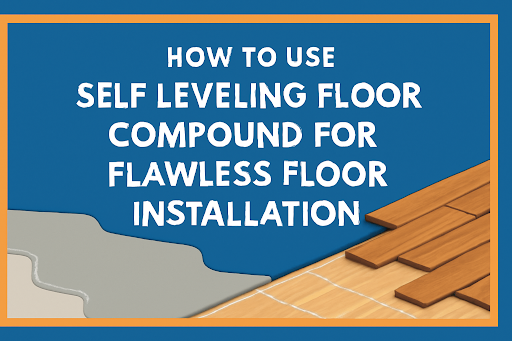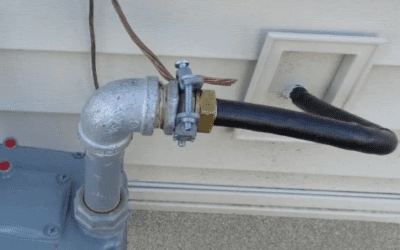Are you looking for an effective way to improve your home’s ventilation and reduce energy costs? If so, Whirlybird roof vent installation might be the perfect solution. In this guide, we’ll walk you through everything you need to know about Whirlybird vents, from what they are and their benefits to a detailed step-by-step installation guide, expert tips, and much more. You’ll feel confident about installing and maintaining these game-changing roof vents by the end. Let’s get started!
Figure 1
What is a Whirlybird Roof Vent and How Does It Work?
Let’s start with the basics. A Whirlybird roof vent, also known as a roof turbine or attic ventilator, is a passive device designed to improve ventilation in your attic or roof space. It’s shaped like a dome and typically made of durable materials like aluminum or stainless steel. It spins to expel hot, stale air. The best part? These vents are eco-friendly and require minimal maintenance.
Whirlybirds are powered by wind. As the wind blows, it turns the turbine’s fins, creating a suction effect. This suction draws out hot, humid air trapped in your attic, replacing it with cooler air from outside. Even in low wind conditions, Whirlybirds are surprisingly effective at maintaining air circulation, making them a practical addition to your home. Some models can even be painted to match your roof color, blending seamlessly into your home’s design.
Whirlybird vents come in two main types:
1. Passive Whirlybirds
These rely entirely on wind power to function. The turbine spins as the wind blows over the roof, naturally expelling warm air. Passive models are cost-effective and perfect for areas with consistent wind.
2. Active Whirlybirds
Equipped with a motor, active Whirlybirds enhance ventilation even without wind. Some models are controlled by a thermostat, ensuring consistent airflow regardless of weather conditions. While they require electricity, active Whirlybirds are ideal for homes in low-wind areas.
What Whirlybirds Do—and Don’t Do
Here’s an important point: Whirlybirds don’t cool your home beyond the ambient outdoor temperature. They don’t function as air conditioners. They ventilate, replacing hot air in your attic with cooler, fresh air from outside. Whirlybirds improve overall airflow, which is always better than no ventilation.
However, to maximize their effectiveness, you need more than just Whirlybirds. Proper ventilation requires a system. For instance:
- Ceiling or eave vents allow cooler air to enter while hot air is expelled.
- If your roof has no sarking (a layer of foil or membrane under the roof tiles), the Whirlybird may pull air through the gaps in the tiles rather than effectively ventilating the attic.
So, the structure of your roof, whether it has sarking, sufficient vents, or an adequate overhang, plays a huge role in how effective a Whirlybird will be.
Figure 2
Benefits of Whirlybird Roof Vents
If you’re wondering whether a Whirlybird vent is worth the investment, here’s why it stands out:
1. Improved Energy Efficiency
While Whirlybirds don’t directly cool your home, they play a key role in reducing the heat that infiltrates your living space. Whirlybirds are especially beneficial during scorching summers when roof spaces reach extreme temperatures. Without proper ventilation, this trapped heat can radiate into your living areas, significantly increasing the strain on your cooling system. Whirlybird vents work continuously to remove this hot air and replace it with cooler air, preventing your air conditioner from overworking and helping to maintain a more stable indoor temperature. Over time, this natural cooling effect leads to noticeable energy savings and a more comfortable environment.
2. Enhanced Air Quality
Whirlybird vents are a great way to improve your home’s overall health and comfort by keeping your attic well-ventilated. One of their most significant benefits is preventing moisture buildup. When moisture gets trapped in your attic, it creates the perfect conditions for mold and mildew to grow. Not only does that lead to musty odors and potential health risks, but it can also cause severe damage to your roof over time. Whirlybirds help by continuously expelling that moist, warm air and replacing it with fresh air.
But that’s not all. Whirlybirds also improve the air quality inside your home. Pollutants, allergens, and stale air can build up without proper ventilation, making things worse for anyone with respiratory issues. By improving airflow, Whirlybirds reduce these problems, creating a fresher and healthier indoor environment for your family.
Think of Whirlybirds as a simple but effective way to protect your home and keep your indoor space more comfortable. They’re not just helping your roof last longer; they’re also making your house a safer and healthier place to live.
3. Low Maintenance
Whirlybird vents are known for being incredibly low-maintenance, especially compared to powered ventilation systems. Passive Whirlybirds, particularly, are simple and reliable because they don’t rely on electricity or have complex components. They run purely on wind power, which means there’s very little that can go wrong. No wiring, no power source—just a cost-effective, hassle-free solution for roof ventilation.
Active Whirlybirds are slightly different since they have a motor to assist with airflow. While they’re somewhat more complex, they’re still easy to maintain. The motors are built to last and typically don’t need much attention. A quick check now and then to make sure the turbine is spinning smoothly and that there’s no debris causing a blockage is usually all that’s required.
Whether you choose a passive or active Whirlybird, you’re getting a low-maintenance option that keeps your roof ventilated with minimal effort.
4. Durability
Whirlybird vents are highly durable, designed to withstand extreme weather conditions and provide reliable performance for years. Made from rugged materials like aluminum or stainless steel, they resist rust, corrosion, and wear, making them ideal for harsh environments. Their simple design, with minimal moving parts, reduces the risk of mechanical failure. At the same time, their sturdy construction ensures they can endure intense heat, heavy rain, strong winds, and even hail. With proper Whirlybird roof vent installation, high-quality Whirlybirds require little maintenance. They can last over a decade, offering a long-term, cost-effective solution for roof ventilation.
5. Environmentally Friendly
If you choose passive Whirlybird vents -which most people do- they are an environmentally friendly solution for roof ventilation because they operate entirely on wind power, requiring no electricity. Requiring no electricity means they generate zero energy consumption during operation, reducing your home’s overall carbon footprint. By relying on natural airflow, Whirlybirds promote sustainable living and help conserve energy resources, making them an excellent choice for eco-conscious homeowners. Additionally, their simple, durable design minimizes waste over time, as they last for years with minimal maintenance or replacement needs. Choosing Whirlybird vents is a practical step toward a greener, more energy-efficient home.
How Many Whirlybird Roof Vents Do You Need?
The number of vents depends on your roof size and ventilation needs. A general rule of thumb is to have one Whirlybird vent for every 50-70 square meters (538-753 square feet) of roof space. However, factors like climate and attic insulation also play a role.
If your attic frequently overheats or experiences poor airflow, consider installing additional vents for optimal performance. It’s always a good idea to consult a roofing professional to determine the exact number you’ll need.
How Do You Locate a Whirlybird Roof Vent?
Okay, so you’re thinking about installing a Whirlybird roof vent. That’s a great choice! However, choosing the right spot for your Whirlybird roof vent installation is critical to its effectiveness.
The best spot is usually near the highest point of your roof, on the side exposed to the wind. You want it to be in an open area away from chimneys, gables, or trees that might block the wind.
When installing two vents, visualize your roof as divided into four equal sections. Place one vent in the first quarter and the other in the last quarter.
Figure 3
For three vents, divide your roof into six equal parts. Place one vent in the first and last parts and the third in the middle.
Figure 4
Step-by-Step Guide to Whirlybird Roof Vent Installation
Ready to install your whirlybird vent? Let’s break it down step by step:
Tools and Materials Needed
- Whirlybird vent kit
- Measuring tape
- Pencil or chalk
- Drill and screws
- Jigsaw or reciprocating saw
- Roofing sealant
- Safety gear (gloves, goggles, harness)
Step 1: Preparation
First things first, check your soffits. Soffit vents (those little openings under your eaves) are crucial. They allow fresh air to enter your attic, creating a nice airflow.
Next, give your roof a quick inspection to ensure it’s in good shape before we start cutting.
Now, it’s time to clear the area. Remove the roofing material where you plan to install the vent. This will give you a clean surface to work with.
Finally, pick the right Whirlybird. The size depends on how much ventilation your attic needs. And don’t forget to choose a spot well-exposed to the wind.
Step 2: Mark the Location
First, find the perfect spot in your attic. Look between the roof rafters for a suitable location.
Next, mark the center point. Drill a tiny hole through the roof to guide you.
Now, head up to the roof. Using the base of your vent as a template, trace a circle on the roof where you’ll cut the hole.
Here’s a little trick: Before you start cutting, drill a large screw through the roof, right in the middle of the rafters. This will make it easier to remove the cut-out piece of roofing later on.
Finally, use the roof mount to double-check the circle you’ve marked.
Step 3: Cut the Hole
First, grab your jigsaw. Use it to cut carefully along the circle you marked on the roof.
Once you’ve cut the hole, clean up any debris and smooth the edges.
Now, double-check the fit. Place the vent mount back in the hole to ensure it fits perfectly.
Step 4: Measure the Roof Pitch
Your vent kit is versatile and works with most roof pitches. It comes with a handy template to help you figure out the angle of your roof. This is important because you want the turbine part parallel to the ground, not the roof.
To measure your roof pitch:
- Put the pitch gauge at the highest point of your roof.
- Align the straight edge of the gauge with the roof’s slope.
- Look at the number on the gauge that lines up with the bottom edge of the straight edge.
That’s your roof pitch!
Figure 5
Step 5: Install the Base
Okay, let’s get that vent mounted!
First, match the pitch: Align the number on the elbow piece with the line on the base flashing. This will ensure the vent is at the correct angle.
Next, Gently lift the shingles around the hole you cut using a pry bar.
Now, place the mounting bracket without any sealant to ensure it fits correctly. You want the top part of the bracket to slide under the top layer of shingles and the bottom part to rest on the layer below. This will help prevent water from leaking in.
Figure 6
Once you’re happy with the fit, it’s time to seal it up. Apply a generous amount of roofing sealant to the underside of the bracket. Carefully slide it into place and secure it with 8-10 roofing nails.
Step 6: Level off the Base
In this step, turn the top part of the elbow counterclockwise until it’s parallel to the ground, not the roof. This will ensure the turbine spins correctly.
Next, apply sealant to the seams between the elbow and the base and around any exposed nails. This will help prevent water from getting in.
Figure 7
Step 7: Attach the Vent
To finish the installation, place the Whirlybird turbine on top of the base and secure it tightly using screws or clamps, as specified in the instructions.
Figure 8
Step 8: Test the Vent
Almost done!
Let’s give the turbine a spin. Manually rotate the turbine to make sure it turns smoothly. Sometimes, the turbine can shift a bit during transport. If you notice any wobbling, gently lift the lowest point of the turbine to straighten it out.
Maintenance and Troubleshooting
Whirlybird vents are designed to be low-maintenance, but a little care can ensure their longevity.
Regular Maintenance:
- Clean Regularly: Periodically clean the turbine blades to remove dirt and debris. This will help maintain optimal performance.
- Check for Issues: Look for squeaking noises or wobbling. If you notice these, lubricate the moving parts to keep them running smoothly.
Common Issues and Quick Fixes:
- Stuck Turbine: If your turbine seems stuck, check for any blockages or debris hindering its movement.
- Leaks: To address any leaks, reapply a sealant bead around the vent’s base.
Expert Tip: Combine Ventilation Methods
It’s crucial to note that a Whirlybird alone might not be sufficient if your roof lacks proper sarking, adequate ventilation, or sufficient sealing. In such cases, the vent might draw air from unintended gaps instead of effectively replacing hot attic air with cooler outside air.
To truly optimize your attic’s ventilation, working in tandem with soffit vents is essential. Soffit vents under the eaves allow fresh air to enter the attic while the Whirlybird expels hot, stale air. This creates a healthy airflow that helps regulate temperature and reduce moisture buildup.
If you suspect that your roof might not be adequately ventilated, consider alternative ventilation systems or a more comprehensive roof upgrade.
Consulting with a roofing professional can help you assess your needs and recommend the best course of action.
FAQs
- What is the lifespan of a whirlybird roof vent?
Most Whirlybirds last 10-20 years, depending on quality and maintenance.
- Can I install a whirlybird on a flat roof?
Yes, but you’ll need additional brackets for proper alignment.
- Do whirlybirds work in low-wind areas?
They can still function through passive ventilation but perform best in moderate wind conditions.
Conclusion
Installing a Whirlybird roof vent is an excellent way to enhance your home’s ventilation, save energy costs, and maintain a comfortable living environment. Whether you choose DIY or professional Whirlybird roof vent installation, the steps are straightforward, and the benefits are long-lasting.
If you’re considering installing a Whirlybird roof vent, don’t wait! Get started today and enjoy a more energy-efficient and healthier home.
Check out our 3rd floor addition video series on youtube!



![Top 20 Reasons for Failing a Plumbing Inspection in Philadelphia [2025 Guide]](https://matrixgc.com/wp-content/uploads/2025/05/Common-issues-causing-failing-a-plumbing-inspection-in-Philadelphia.png)




0 Comments